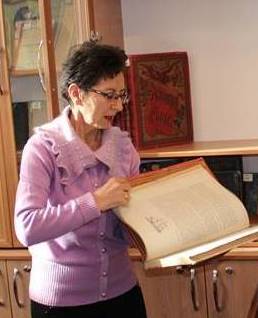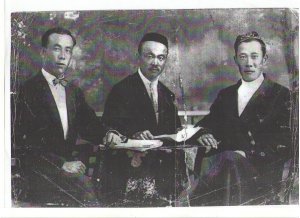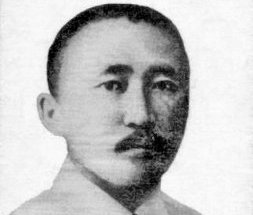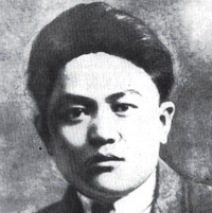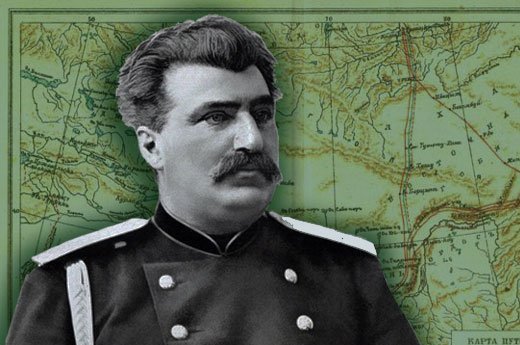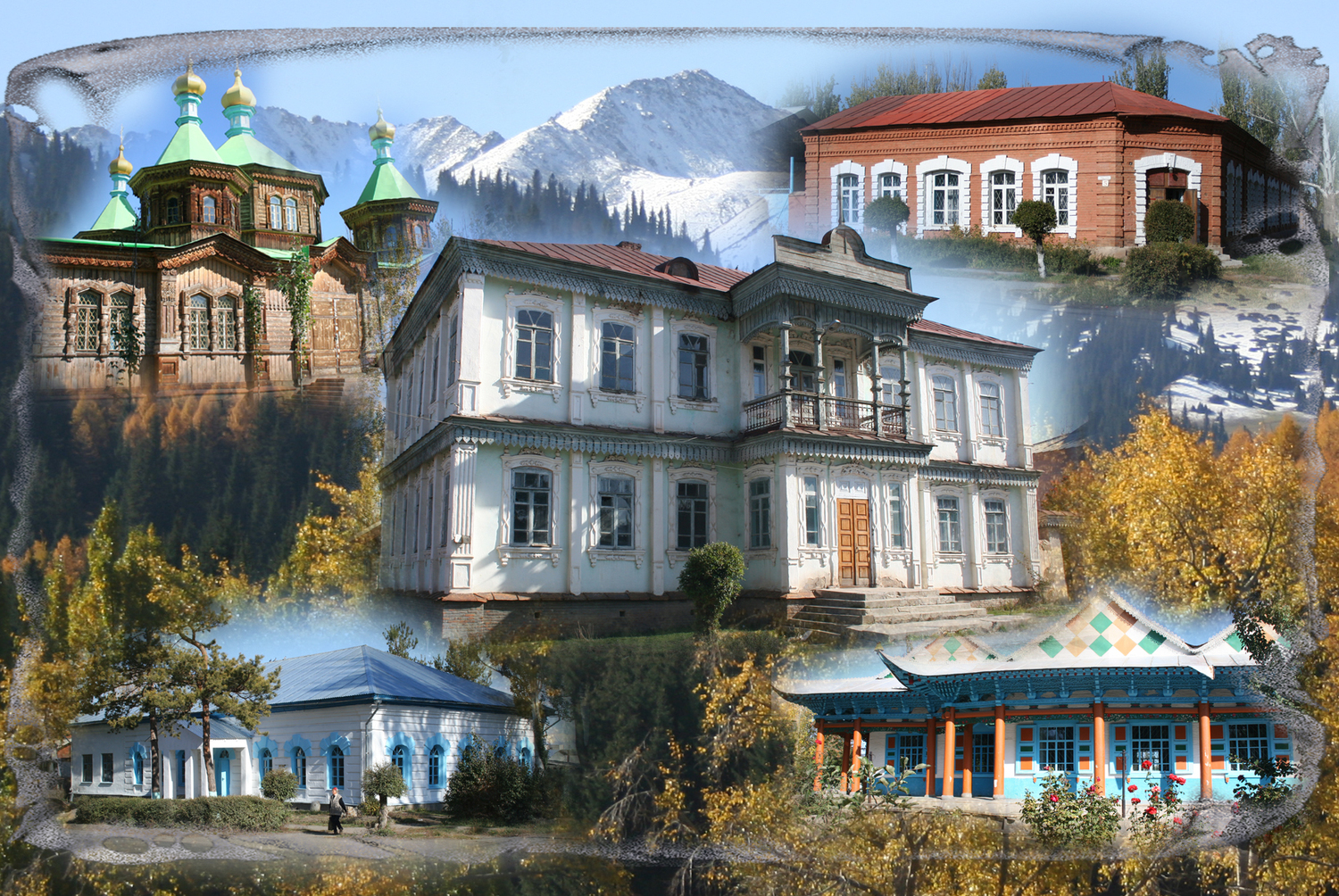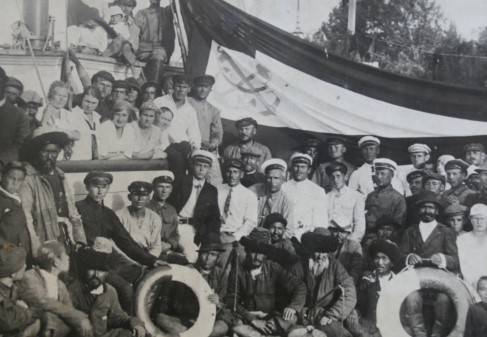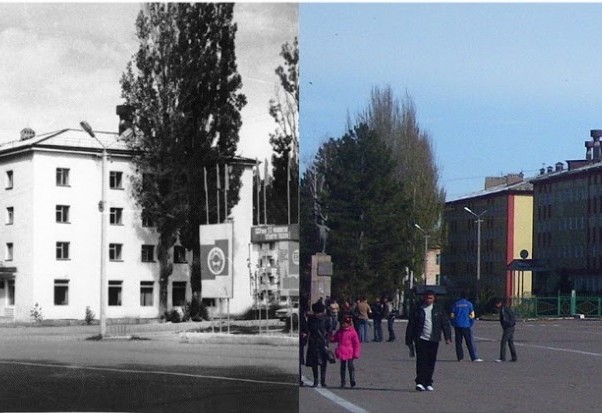- Visit Karakol, Kyrgyzstan, Karakol
- +996 551 451515
- info@visitkarakol.com
Karakol - Educational Center
At the beginning of the 20th century, an event with great importance towards raising the cultural level of the working people took place in Karakol. On May 14, 1902, in the two-story wooden building at the corner of Barsovskaya Street (now Oktyabrskaya) and Preobrazhenskaya Street (now Gebze), the first library opened in Kyrgyzstan. Its history is closely connected with the history of the formation of the city. After the death of the great traveler and scientist N.M. Przhevalsky, his comrades and pupils P.K. Kozlov and V.I. Roborovsky decided to open a museum and library with the aim to perpetuate his memory in the mountain region. Soon local ethnographer J.I. Korolkov received a 200 rubles money transfer.
In a cover letter, Kozlov and Roborovsky asked to organize a fund-raising for the opening of a public library.
The doctor N.M. Barsov made a significant contribution. In 1896, the public meeting of Karakol made a decision to support the public library and reading room with 300 rubles each year.
The money was provided to the savings bank and doctor Barsov led public efforts to open the library.
On August 4th 1901 the vice-governor of region Ostashkin approved the "Charter of the Przhevalski Public Library-Reading Room", which stated the following goal: to give free access to books to those residents of the town who, due to lack of funds, need free use of reading books, magazines, newspapers and special editions.
The library-reading room consisted of two departments in the same building:
1) a free library-reading room and
2) a paid library with a reading room. Both branches share the same materials. The institution was named "Przhevalski public library-reading room".
Funds for the maintenance of the library consisted of annual income, special capital and inviolable capital.
The working capital was composed of:
1. Annual allocations from the town's budget of no less than 300 rubles per year.
2. Monetary donations from individuals and associations.
3. Net profit earned from the sale of tea in the reading room.
4. Donations made at concerts, performances, literary, musical and family evenings, public readings, arranged with proper permission each time and in compliance with the existing legal regulations and orders of the government on this subject.
Finally, on May 14th 1902, the library-reading room was opened. The chairman of the directorate A. A. Mikhailov gave a solemn speech. On May 27, 1902 the Public Library accepted its first readers. The board consisted of six members. Back then, the library was in a two-story house. Paid readers visited the upper "cabinet" which was open every day from 5 to 10 pm, except Saturdays. There were only 560 books.
Downstairs, once a week on Sundays and on other holiday days, other readers were allowed. For free reading, 450 copies of books were available. Up to 100 readers and 38 wealthy citizens for the paid department visited the Public Library.
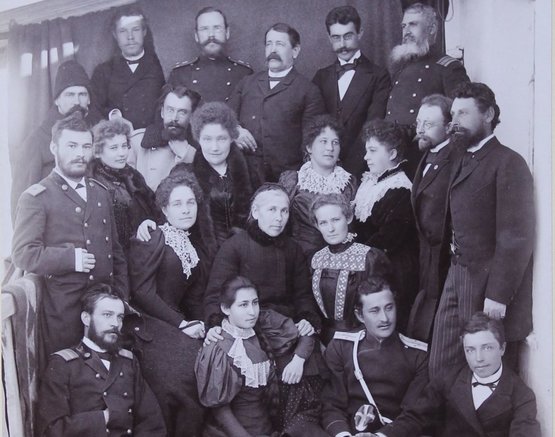
Members of the Przewalski Drama Society. 1984
The Library was named Public because most of the citizens considered it their duty to help in the acquisition of the book fund.
An example of this is N.M. Barsov, who donated 40 valuable books with scientific content to the library. Moreover, readers donated personal books and magazines. Until today, the library has book editions donated by B. Kaplun; "Our Ballet" (1899), by J.I. Korolkov "Ornament of All Time and Peoples" (1898), and K. Keller's "The Life of the Sea" (1986). There also were publications by Lermontov, Belinsky ad Chernyshevsky, which contributed to the acquaintance of the Kirghiz or Kyrgyz? population with Russian classical literature. The library received the following periodicals: "Herald of Europe", "Historical Herald", "Bulletin of Education", "Russian Wealth", "New Times", "Siberian Herald", "Turkestan Vedomosti" and others.

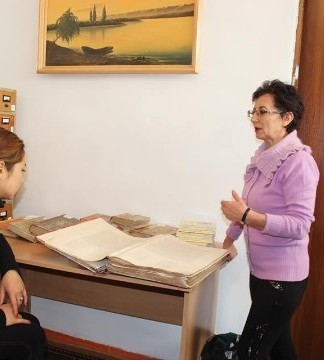
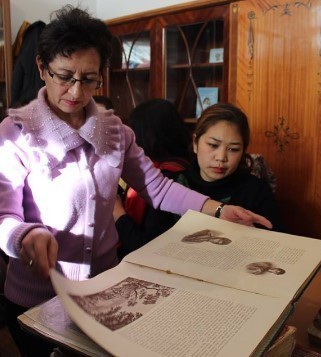
Readings that promoted the advanced ideas of Russian poets, writers, scientists, travelers among the local population were organized in the evenings. After the October Revolution, the library truly became popular, turning into a hotbed of culture and enlightenment. It contributed to the elimination of illiteracy. With gratitude, we recollect the first librarians - Varavin M.I, Chikeev G., Osminin N.P and Melekhov S.A. The town's progressive intelligentsia ran the library. The first librarian was also the library's chairman, A.A. Mikhailov. The veterinarian Kasatkin also took that position.
Compared with other county centers in the Semirechye region, Karakol was notable for its facilities, which were equipped with necessary textbooks, teaching aids, and all kinds of demonstration devices. For example, in high-quality two-story buildings, there were women and men's town schools. Classes of schools were bright and sufficiently large. A survey of students obtained in different classes revealed that "the answers in arithmetic, geography and the Russian language indicated that children learn the course satisfactorily".
This is the great merit of one of the first heads of the men's school, Mikhail Vasilyevich Zaitsev. Highly educated Zaitsev could have applied his knowledge to more prestigious bureaucratic service, but he devoted his life to the noble, but underpaid job of a teacher.
Zaitsev possessed excellent pedagogical background. "Reason, dressed in the mildest form of suggestion, affecting the boy's pride and habituating him to books and knowledge - that's all the steps that he put into the basis of his system and achieved brilliant results by that."
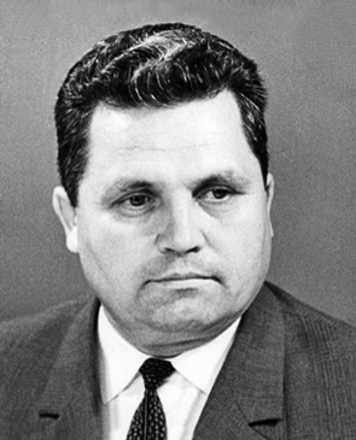
M.V. Zaitsev.
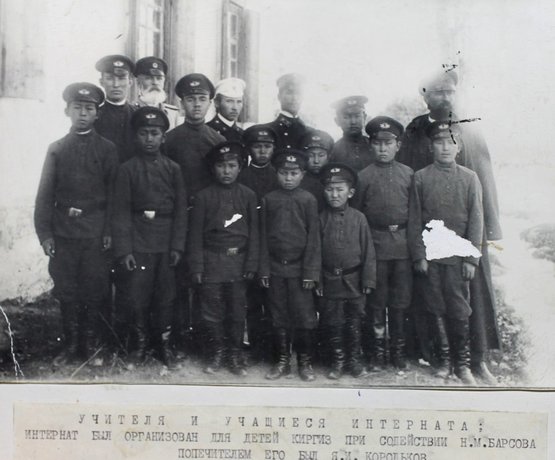
Teachers and students of the boarding school for children. Early 20th century.
Karakol's location far from other cultural urban centers and the low wages did not attract people with higher education to devote their life to pedagogical activity in such a distant region of the Russian Empire. Therefore, there was an acute shortage of teachers in the early twentieth century. Out of eight staff units 3 teachers of different disciplines were unavailable. What does this mean? I don't understand it in Russian either.
The school students were very heterogeneous; among them were Russians, Kyrgyz, Dungans and Kalmaks. Kirghiz children, whose parents were in remote pastures, were planned to be placed in a special boarding school, but in 1909 the building was not yet completed, and the boarders had to live at the school.
In 1879, the Karakol School of joint education transformed into a two-year specialized school. It was an educational institution of a boarding school type, where in 1884 there were 22 students.
Before the revolution, there was one madrasa in the Uzbek mosque, where the worshipers of the mosque and the housekeepers were trained. The students of madrasas were children of bays (wealthy men), manapes (also wealthy men) and generally of wealthy families. The sons of poor people were very rarely able to enter a madrasa.
The studies in the madrasa lasted from October to April. Classes were held 4 times a week: on Saturday, Sunday, Monday and Tuesday. They did not study in periods of fasting, during religious holidays and in summer holidays, which were from May to October. After graduating from the local madrasa in Karakol, some graduates continued their studies in the more famous madrasas of Bukhara or Kokand.
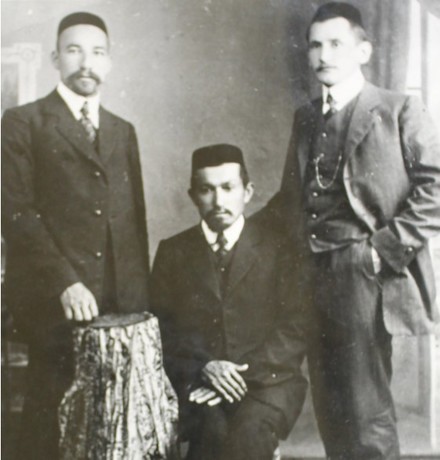
The first teachers of the Muslim school (left to right) S.Nadyrshin, Z.Tairov, H.Rahimov. 1906.
In 1902, Karakol opened the first new-method school, organized by representatives of the Tatar intelligentsia. Everywhere new-method schools started to open. The classes in these schools were conducted mainly in the Tatar language. In mektabs (schools) organized according to the old system students needed several years to learn to read and write at a decent level. The new-method schools achieved the same results much faster in just a few months due to their progressive teaching methods.
The first Russian-native school of Karakol was a preparatory board, opened in 1874.
10 boys received education, one from each county. Children housed in student apartments lived in difficult conditions: the provision of food and clothing was irregular and sanitary conditions were insufficient. Therefore, the school was transformed into an agricultural school for the Kirgiz children in 1887. At the beginning of the 20th century, since the first Russian-native schools did not give the desired results, the Turkestan administration did not open any more schools of that type in any other regions, including Karakol. Therefore, in 1905, it was decided to open a boarding school, and in 1906, a Russian-native school with 50 students started functioning in Karakol.
In 1911, a Russian-native women's incomplete gymnasia opened in Karakol.
Pre-revolutionary schools, contrary to the wishes of the tsarist officials, played a very important role in educating the Kyrgyz people, acquainting them with the Russian language, and through it with the rich Russian culture. All this contributed to the Kirghiz people becoming one nation and the penetration of advanced Russian democratic culture and revolutionary ideas into the Kyrgyz environment.
In 1923, he composed a reformed Kyrgyz alphabet on the basis of Arabic graphics, in which his book was published in 1924 for reading "Okuu Kitebi" (a school book), and later a number of reading books for beginners. In 1923-1924 he was a member of the Kara-Kirghiz Scientific Commission. In 1927 he was appointed People's Commissar of Education of the Kirghiz ASSR. In 1930 he became a research fellow, and later a director of the Kyrgyz Institute of Cultural Construction. Parallel to that, he taught at the Kirghiz Pedagogical Institute from 1932 (first an associate professor, since 1936 a professor). During this period Tynystanov wrote and published a number of works on Kyrgyz linguistics.
He is called the father-founder of the statehood of Kyrgyzstan because he made a huge contribution to the sovereignty of the republic. Twice he raised to Stalin the question of granting Kyrgyzstan the status of a union republic. In 1924, the borders of modern Kyrgyzstan were finally defined. Abdrakhmanov set the goal to realize the idea of free self-determination of the people. Subsequently, the Kyrgyz Autonomous Soviet Socialist Republic was formed.
The project "Preserving the cultural heritage of Karakol" was initiated by the YVO (youth volunteering organization) "Leadership" in cooperation with the Issyk-Kul Oblast State Archive and the media partner "Issyk-Kul Wave" radio station, with the support of Internews. Project Objectives:
- to contribute to the preservation of the architectural heritage of Karakol;
- to develop an interactive online map showing the historical sites of the city;
- to conduct a thematic media campaign to attract the attention of local residents and to develop civic engagement.
Information about the project: http://www.leadership.kg/index.php/ru/save-karakol...
The team of YVO "Leadership" The YVO (youth volunteer organization) "Leadership" team took part in the Laboratory of Media and Social Innovations in Dushanbe (Tajikistan) from May 21 to 23, 2017, organized by the Internews Network in Central Asia. Lab is a social project for solving socially significant problems and addressing the needs of inhabitants of Tajikistan, Kyrgyzstan and Kazakhstan. Such events are a good tool to stimulate the participation of youth, civil society and the IT community in the implementation of socially significant media initiatives. Our team presented the project "Creating an Internet platform about the historical heritage of Karakol". Following the results of the Laboratory, a team of experts and mentors supported one idea from each participating country. Our idea became the winner from Kyrgyzstan, and thereby we won a grant to implement the idea. We express our gratitude to all the mentors and organizers of the Laboratory - 2017 #inLab2017Link to our presentation of the project during the Laboratory:https://m.facebook.com/story.php…
